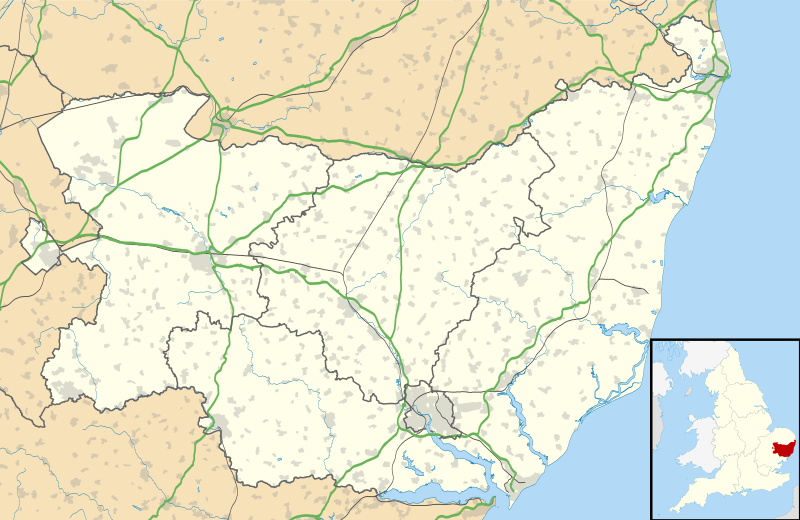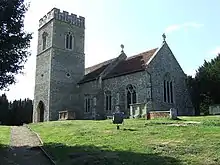Burgh, Suffolk
Burgh (/ˈbɜːrɡ/)[1] is a village and civil parish in the East Suffolk district of Suffolk, England, about 3.5 miles (6 km) north-west of Woodbridge.[2]
| Burgh | |
|---|---|
 Burgh Windmill | |
 Burgh Location within Suffolk | |
| Population | 182 (2011 census) |
| District | |
| Shire county | |
| Region | |
| Country | England |
| Sovereign state | United Kingdom |
| Post town | Woodbridge |
| Postcode district | IP13 |

St Botolph's church stands near the site of a Roman villa that stretches towards Clopton churchyard. The body of Saint Botolph (or Botwulf) is supposed to have been buried at his foundation of Icanho (Iken) but in 970, Edgar I of England gave permission for Botolph's remains to be transferred to Burgh, where they remained for some fifty years before being transferred to their own tomb at Bury St Edmunds Abbey, on the instructions of Cnut. The church building dates from the 14th century and is a Grade II* listed building.[3] In the north wall is a mural painting by Anna Zinkeisen in memory of her husband Col. Guy Heseltine of c. 1967 showing birds of the Bible.
The population of Burgh is about 200, measured at 182 at the 2011 census.[4] Because of its small size, there is no parish council, and no parish rate is levied. Instead, there is a parish meeting to which all villagers are invited. This meeting occurs two or three times a year. During these meetings, residents are welcome to discuss the issues, problems, concerns and affairs of the village.
Several artists and craftsmen live and work in the village.
The neighbouring village of Grundisburgh and the towns of Woodbridge and Ipswich provide shops and all business and commercial services.
References
- Wells, John C. (5 March 2007). "Place names". Retrieved 11 April 2012.
- "History of Burgh in Suffolk Coastal". Retrieved 5 April 2018.
- Historic England. "CHURCH OF ST BOTOLPH (1197947)". National Heritage List for England. Retrieved 30 March 2014.
- "Parish population 2011". Retrieved 16 September 2015.